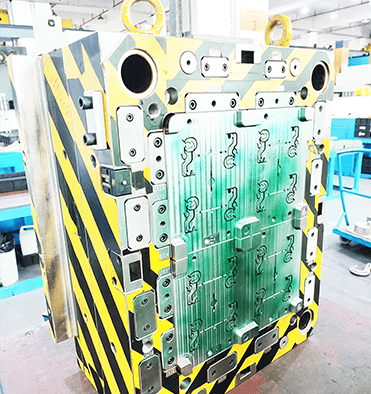Creating a High-Quality Plastic Injection Crate Mold for Efficient Storage Solutions
In today’s fast-paced world, efficient storage solutions are crucial for various industries. One such solution is the plastic injection crate, which offers durability and versatility. To produce these crates efficiently, the mold used for injection molding plays a vital role. This article will discuss the process of creating a high-quality plastic injection crate mold for efficient storage solutions.
Design Considerations:
The first step in creating a high-quality plastic injection crate mold is to carefully consider the design. The mold design should ensure that the final product meets the required specifications. Factors such as the crate’s size, shape, and weight capacity should be taken into account during the design process. Additionally, considering the ease of demolding, compatibility with injection molding machines, and the ability to withstand repeated use are essential factors to consider.
Material Selection:
Choosing the right material for the mold construction is critical. Steel is commonly used due to its durability and excellent heat conductivity. Depending on the specific requirements of the injection crate, different types of steel, such as stainless steel or tool steel, may be used. The material selection should also consider factors like corrosion resistance, thermal stability, and cost-effectiveness.
Mold Manufacturing:
Once the design and material selection are finalized, the mold manufacturing process begins. This involves several steps, including machining, heat treatment, and surface finishing. Machining involves the removal of excess material from the steel to shape it according to the mold design. Heat treatment helps improve the mold’s hardness, strength, and wear resistance. Surface finishing techniques, such as polishing or electroplating, enhance the mold’s surface quality and reduce friction during the injection molding process.
Quality Control:
Ensuring the high quality of the plastic injection crate mold is paramount. Quality control measures should be implemented at every stage of the manufacturing process. This includes rigorous inspections of the mold’s dimensions, surface finish, and overall structural integrity. Non-destructive testing techniques, such as ultrasonic or X-ray inspection, can be employed to detect any hidden defects or cracks. Additionally, conducting trial runs with the mold to check for any functional issues or potential improvements is crucial.
Assembly and Testing:
After the mold components are manufactured and inspected, they are assembled to create the complete mold structure. The mold assembly process requires a high level of precision and expertise. Once assembled, the mold is thoroughly tested to ensure its functionality. Testing involves injecting molten plastic into the mold and analyzing the resulting products for any defects or inconsistencies. Any necessary adjustments or modifications are made to optimize the mold’s performance.
Conclusion:
The creation of a high-quality plastic injection crate mold is a complex process that requires careful consideration of design, material selection, and manufacturing techniques. By focusing on these aspects, manufacturers can produce molds that meet the requirements of efficient storage solutions. Implementing rigorous quality control measures and conducting thorough testing further ensures the mold’s performance and longevity. With the right mold, industries can benefit from efficient storage solutions provided by plastic injection crates, contributing to streamlined operations and improved productivity.
Папярэдняя:Exploring the Concept of Overmold in English Manufacturing Techniques
далей: Purchasing Large Plastic Molds: A Comprehensive Guide to Procuring High-Quality Mold Solutions
-
Designing a Lightweight Plastic Chair Mould: A Perfect Solution for Comfort and Convenience
2023-8-22
Introduction Plastic chairs have become an integral part of our lives due to their versatility, affordability, and ease ...
Паглядзець дэталі -
China Injection Molding: Plastic Injection Molding Machine
2023-5-9
Introduction Plastic injection molding is a manufacturing process that involves the creation of three-dimensional solid ...
Паглядзець дэталі -
Designing the Perfect Plastic Crate Mould: A Comprehensive Guide
2023-9-20
Introduction Plastic crates have become an essential tool in various industries, including logistics, agriculture, and r...
Паглядзець дэталі -
Injection mold making: Precision processes shaping the future of industry
2024-12-31
In modern manufacturing industry, injection mold manufacturing occupies a pivotal position. From plastic products in dai...
Паглядзець дэталі -
High-Quality Injection Molding Parts for Your Manufacturing Needs
2023-4-23
High-quality injection molding parts are essential for manufacturers who want to produce products that meet the needs of...
Паглядзець дэталі -
Crafting the Perfect Crate Mould: Unlocking Efficiency and Precision
2023-7-10
Introduction: In the world of manufacturing and packaging, the creation of a perfect crate mould plays a crucial role in...
Паглядзець дэталі








